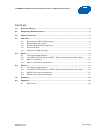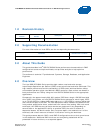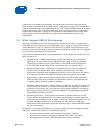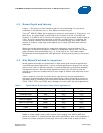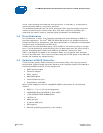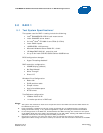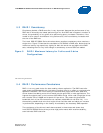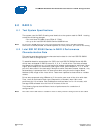
Intel
SSD DC S3500 Workload Characterization in RAID Configurations
White Paper December 2013
8 329903-001US
mixes, read-intensive workloads are more prominent. In summary, it is important to
select the proper SSD for a particular workload.
The examples presented here use 100% write and 100% read workloads to show the
maximum performance in these areas. Also, 70%/30% read/write and 90%/10%
read/write are used in order to simulate typical workloads in the datacenter.
4.4 Drive Endurance
Drive endurance, or wear, is an important consideration when selecting an SSD for a
particular application. The Intel
®
SSD DC S3500 Series drive is a standard endurance,
enterprise class drive, designed for read-heavy workloads. It is important to understand
how drive wear is affected by the RAID level.
A RAID level that uses dedicated parity, such as RAID 4, will write all parity to a single
drive. This can potentially cause the parity drive to wear faster than the other drives in
the set. Distributed parity RAID levels (RAID 5 and RAID 6) reduce this issue.
RAID 1 and RAID 5, as tested in this example, shows very consistent wear across all
drives in the RAID sets. This is due to the tests using the full LBA space of the RAID set,
thereby not creating any hotspot activity.
4.5 Selection of RAID Controller
There are many quality RAID controllers on the market today, with varying levels of
performance, features and price points. Below are the important features considered in
selecting the RAID controller for this sample test:
• RAID levels available
• Controller chipset
• PCIe* version
• SAS/SATA speed
• Internal/External ports
• Compatibility with SSDs
Within these categories, the LSI* MegaRAID 9265-8i was chosen for the following
reasons:
• RAID 0, 1, 5, 6, 10, 50, 60 are supported
• LSISAS2208 Dual-Core RAID on Chip (ROC)
• 1 GB 1333MHz DDR3 SDRAM Cache
• x8 PCIe 2.0
• 6Gb/s per port
• 8 internal SAS ports
• SSD support
• Relative availability/popularity in the industry





